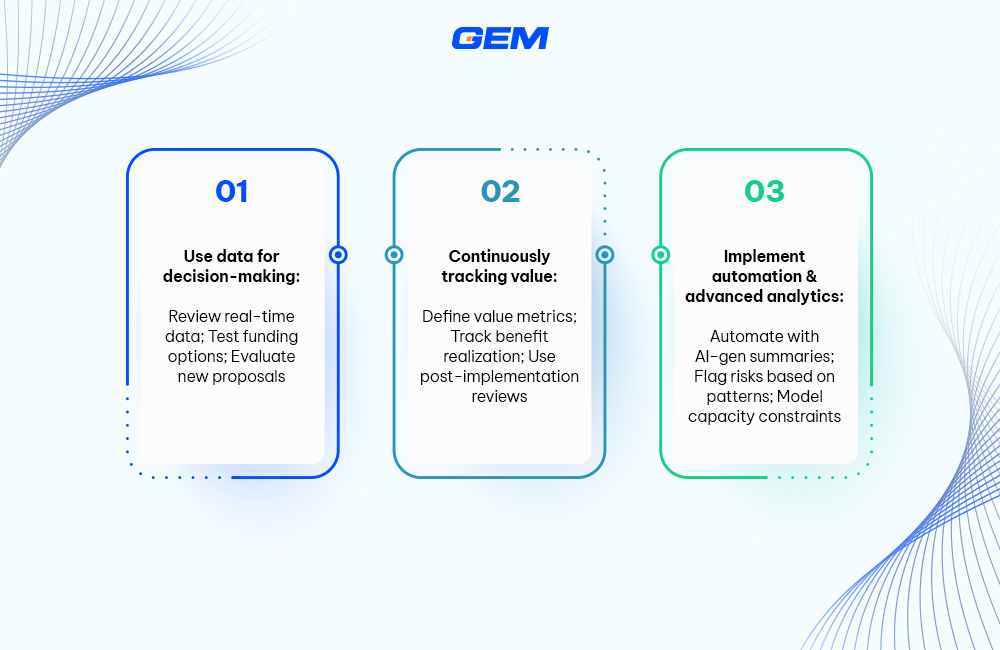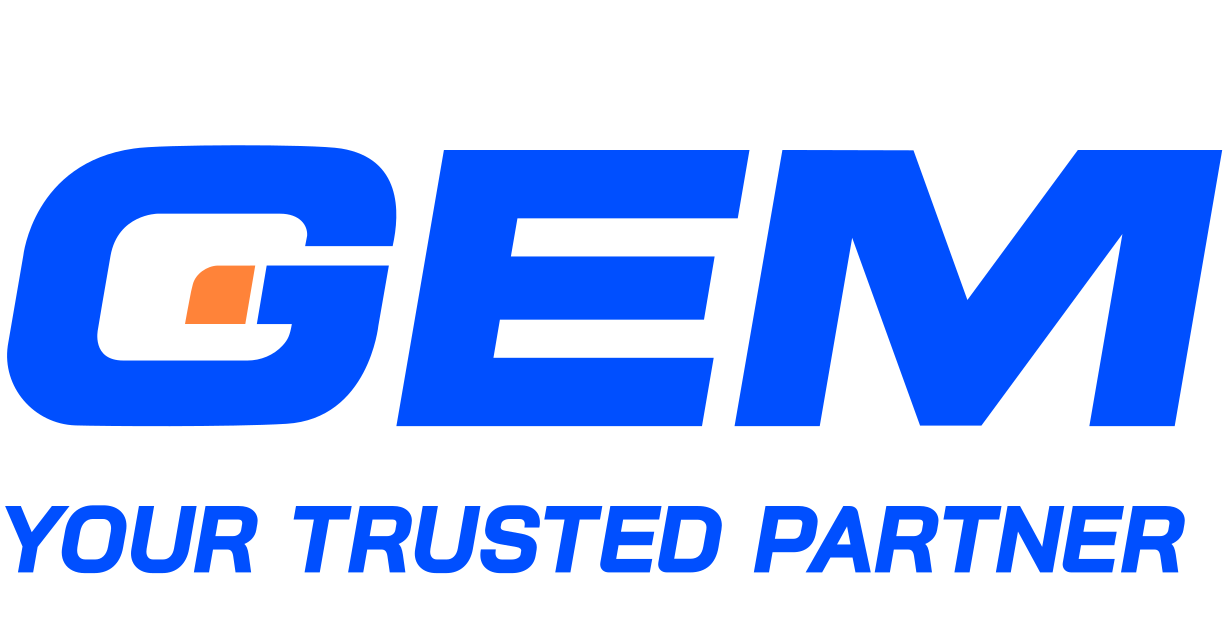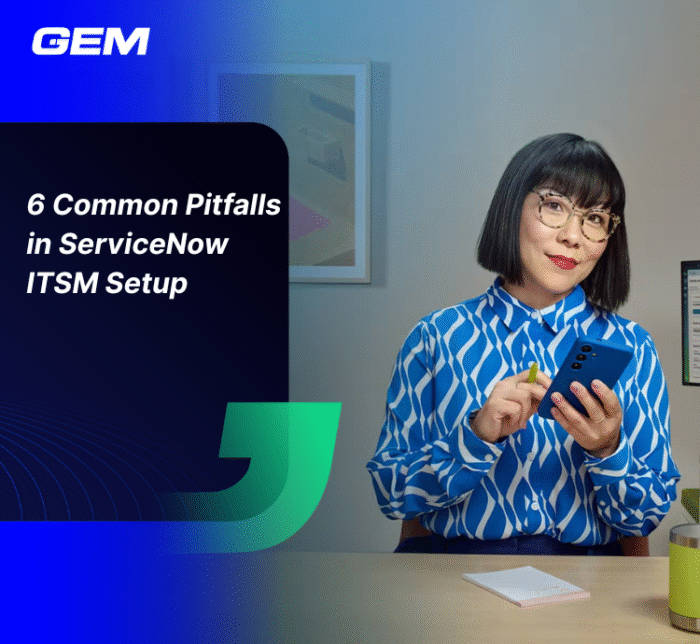Contents
- What is Strategic Portfolio Management?
- What Is ServiceNow SPM – and Where Does It Fit?
- Core Capabilities of ServiceNow SPM
- What Organizations Gain from Implementing ServiceNow SPM
- ServiceNow SPM vs Application Portfolio Management
- Practical Considerations for Getting Started
- How to Optimize with ServiceNow SPM?
- Partnering with GEM Corporation – A Trusted ServiceNow Solution Provider
- Conclusion
Many enterprise teams adopt ServiceNow SPM to improve how they plan, fund, and manage strategic initiatives, but the platform’s full value often comes from how it’s structured and applied. This article breaks down what ServiceNow SPM is, how it fits into broader enterprise planning, and which capabilities matter most for long-term success. We’ll also explore how key features like scenario planning, investment funding, and performance analytics work together to support decision-making.
If you’re evaluating SPM or looking to get more from your current setup, this overview can help clarify what to focus on and where to start.
What is Strategic Portfolio Management?
![]()
Strategic Portfolio Management (SPM) encompasses the capabilities and processes that organizations use to allocate resources and funding effectively across portfolios in order to achieve their strategic objectives.
Despite growing demand, adoption remains a challenge. According to Gartner, only 16% of organizations have achieved effective SPM maturity. The gap, though, reveals opportunity. Deloitte estimates that a global enterprise with $8 billion in annual revenue could avoid $10.2 million in nonproductive investment over three years by applying SPM practices. Gains extend beyond cost control, impacting decisions, delivery speed, and strategic clarity.
SPM reshapes how organizations assess and deliver value (IBM). It helps align portfolios to changing business priorities and provides cross-functional transparency during periods of uncertainty. By shifting focus from volume of work to value of work, SPM enables teams to make better trade-offs and reduce exposure to misaligned investments.
In a volatile environment, the ability to continuously reassess priorities, fund the right initiatives, and track outcomes at scale is no longer optional. SPM offers the structure to make that possible.
What Is ServiceNow SPM – and Where Does It Fit?

ServiceNow Strategic Portfolio Management (SPM) is a platform that assists businesses in allocating resources, prioritizing projects, tracking outcomes, and matching IT expenditures with business objectives. It facilitates improved decision-making and quicker value delivery by offering a single picture of projects, portfolios, and strategies. SPM basically assists businesses in making the most of their resources and ensuring that their work is in line with their overarching strategic goals.
Previously known as ServiceNow ITBM (IT Business Management), the suite has expanded from IT-focused use cases to support enterprise-wide planning. While ServiceNow project management tools remain part of the platform, SPM now applies to a broader range of activities, including operational programs, product development, and cross-functional initiatives.
SPM works in coordination with ServiceNow ITSM and other digital change efforts to improve visibility across portfolios.
It is used by PMOs, finance teams, transformation leaders, and delivery managers who need shared access to planning, funding, and execution data. For organizations managing multiple streams of work, SPM helps connect top-level goals with day-to-day delivery without relying on spreadsheets or disconnected systems.
Core Capabilities of ServiceNow SPM
ServiceNow SPM includes a range of capabilities designed to support strategic planning, funding allocation, and coordinated delivery across portfolios. Each module plays a role in connecting business priorities with execution across agile, project-based, or hybrid operating models.
Now Assist for SPM
Now Assist brings generative AI into the SPM workspace. It helps users summarize records, generate updates, and extract context from portfolio data. This supports faster workflows across planning and reporting tasks.
Scenario Planning
This capability gives leadership teams a way to test different investment and resource scenarios before making decisions. By adjusting variables such as cost, capacity, or priority, teams can compare options side by side and align on the most viable path.
ServiceNow Agile Development
Agile Development supports backlog management, sprint planning, and team collaboration. It connects product and engineering work with portfolio-level visibility, giving teams a structured way to plan and deliver in agile environments.
Project Portfolio Management
PPM provides tools for managing projects across budgets, timelines, milestones, and status reporting. It helps PMOs and delivery teams monitor execution across multiple projects and programs from a central location.
ServiceNow Demand Management
Demand Management captures, assesses, and routes incoming requests. It helps business and IT teams evaluate proposals based on strategic alignment, feasibility, and expected impact, supporting consistent prioritization.
ServiceNow Resource Management
This module supports capacity planning and resource allocation. Managers can review availability, forecast demand, and assign work based on skill, role, or location. It helps balance workloads across active and planned initiatives.
Innovation Management
Innovation Management helps collect and assess new ideas from across the organization. It supports early-stage intake, evaluation criteria, and progression into formal planning cycles, offering a way to turn concepts into funded initiatives.
Digital Portfolio Management
Digital Portfolio Management tracks business capabilities, digital products, and associated investments. It links goals to delivery progress and helps teams organize work around customer-facing outcomes.
ServiceNow Release Management
Release Management brings structure to how teams coordinate changes. It supports scheduling, dependency tracking, and communication across releases, helping reduce delivery risks across shared environments.
You might also like: Servicenow ITOM
What Organizations Gain from Implementing ServiceNow SPM
ServiceNow SPM centralizes planning, funding, and delivery across initiatives, giving leadership teams a structured way to manage complexity and respond with greater agility. Implementing SPM brings measurable impact across four key areas:
Visibility Across Portfolios
All ongoing and planned work is captured in one environment, giving decision-makers a full view of timelines, budget usage, and delivery risk without toggling between systems or relying on fragmented reports.
Prioritization and Investment Clarity
Teams can assess new proposals based on capacity, business value, and strategic alignment. Scenario planning tools support faster decisions by modeling trade-offs and funding options across the portfolio.
Coordination Across Delivery Models
With support for agile, waterfall, and hybrid teams, SPM brings structure to delivery across functions. Dependencies, timelines, and outcomes are tracked in a shared system, reducing friction between planning and execution.
Alignment Between Demand and Capacity
Resource planning is integrated into demand workflows, helping teams avoid over-allocation and plan based on actual availability. This improves delivery predictability and supports stronger outcomes against strategic targets.
ServiceNow SPM vs Application Portfolio Management
While both ServiceNow SPM and Application Portfolio Management (APM) provide portfolio-level insights, they serve distinct functions and operate at different layers of enterprise planning. Understanding how they differ and where they intersect helps organizations apply each tool effectively.
Differences in Scope and Purpose
ServiceNow SPM
Focuses on strategic work planning. It tracks initiatives, programs, and product development by connecting demand, funding, and delivery. SPM supports portfolio-level decisions across business and IT functions.
Application Portfolio Management (APM)
Focuses on the software landscape. It identifies which applications are in use, how they perform, and what risks or costs they carry. APM supports technical decisions around application rationalization, modernization, or retirement.
How They Complement Each Other
- APM provides structured data on applications – cost, usage, risk, and dependencies.
- SPM uses this data during scenario planning and prioritization to support investment decisions.
Together, they connect technical asset insights with enterprise strategy, giving stakeholders a clearer basis for action, whether that’s sunsetting legacy systems or funding digital expansion.
Summary Table: ServiceNow SPM vs Application Portfolio Management
| Dimension | ServiceNow SPM | ServiceNow APM |
| Primary Focus | Strategic planning and delivery across programs and initiatives | Visibility and control over the application landscape |
| Scope of Planning | Projects, programs, agile delivery, funding, and outcomes | Application lifecycle, cost, risk, and technical fit |
| Users | PMOs, finance leaders, delivery teams, transformation office | Enterprise architects, IT asset managers, application owners |
| Typical Use Cases | Demand prioritization, scenario modeling, resource coordination | Demand prioritization, scenario modeling, resource coordination |
| Key Capabilities | – Scenario planning
– Resource and demand planning – Agile and project tracking – Investment governance |
– Application discovery
– Dependency mapping – Cost/risk analysis – Lifecycle status evaluation |
| Output | Portfolio-level decisions on funding, resourcing, and execution | Application-level decisions on support, upgrades, or retirement |
| Integration Point | Uses APM data for investment analysis and strategy alignment | Feeds SPM with application insights to inform broader planning |
Read more: ServiceNow ITAM: Optimize Your IT Assets for Maximum Efficiency and Control
Practical Considerations for Getting Started
Implementing ServiceNow SPM calls for cross-functional coordination, upfront clarity on priorities, and a willingness to adjust how work is planned and tracked. Organizations that approach the early phases with a structured lens tend to see stronger adoption and faster returns.
Focus Areas in the Early Phases
In the initial rollout, the priority should be to establish a foundation that connects planning with execution. Rather than attempting a full-scale deployment across all portfolios, many organizations begin by focusing on:
- A single business unit or transformation program to pilot core workflows
- High-visibility initiatives where leadership engagement is already in place
- Demand intake, project tracking, and resource allocation as the first set of capabilities
Starting with a manageable scope allows teams to refine processes, gain user feedback, and build a repeatable model before scaling.
Building Internal Alignment Across Teams
ServiceNow SPM spans business, technology, and delivery teams. Without internal alignment, adoption tends to stall. To address this, organizations should:
- Define roles and responsibilities across PMO, finance, IT, and product teams
- Establish a common vocabulary around demand, investment, and outcomes
- Set up a governance model to review prioritization decisions and track progress
Workshops, shared planning sessions, and early involvement from key stakeholders help build trust in the system, and in the data it produces.
Stop trying to find the dots. Let us help you connect them!
Common Challenges During Adoption
Most implementation hurdles fall into one of three categories:
Process Maturity Mismatch
Teams may not have standardized processes in place for intake, project tracking, or resource planning. SPM will expose these gaps. Rather than viewing this as a setback, teams should use it to identify where alignment and process design are needed.
Data Inconsistencies
Incomplete or outdated data can derail planning decisions. Establishing data ownership and setting clear expectations for data quality are essential from the outset.
Underestimating Change Management
New workflows and visibility can shift how decisions are made. Without clear communication and leadership support, resistance is common. Organizations need to treat SPM rollout as both a systems project and an organizational change initiative.
How to Optimize with ServiceNow SPM?

Once the initial rollout is in place, the focus shifts from implementation to operational maturity. Optimization involves using data not just to track activity, but to guide decisions and support continuous planning across the enterprise.
Using Data to Guide Decision-Making
SPM centralizes portfolio data, but the value comes from how that data is used. Organizations can improve decisions by:
- Reviewing real-time dashboards to monitor delivery, budget, and capacity trends
- Using scenario planning tools to test funding options based on historical data
- Applying investment scoring frameworks to evaluate new proposals
Over time, this helps transition from reactive planning cycles to more consistent and evidence-based decision-making.
Evolving from Planning to Continuous Value Tracking
Initial planning often focuses on deliverables, timelines, and resource allocation. But mature use of SPM shifts the conversation toward outcomes. This includes:
- Defining value metrics at the intake stage
- Tracking benefit realization alongside delivery milestones
- Using post-implementation reviews to close the loop between planning and results
Continuous value tracking creates a feedback loop that helps refine future planning and justify ongoing investments.
Maturing Practices with Automation and Analytics
As teams grow more comfortable with the platform, automation and advanced analytics can reduce manual work and surface insights that were previously hidden. Examples include:
- Automating status updates using AI-generated summaries
- Flagging risks based on delivery patterns or missed milestones
- Using predictive analytics to model capacity constraints before they materialize
According to McKinsey, organizations that embed analytics into operational decision-making are more likely to outperform peers in both delivery speed and cost control. ServiceNow SPM provides the infrastructure to support that shift, if paired with the right governance and data discipline.
Read more: Transform Your HR Services Today with ServiceNow HRSD – Streamline Processes and Delight Employees!
Partnering with GEM Corporation – A Trusted ServiceNow Solution Provider

Partnering with a ServiceNow-certified partner helps organizations move faster and with greater confidence. GEM Corporation supports clients across industries in deploying ServiceNow solutions that improve visibility, coordination, and control across enterprise workflows.
As a certified ServiceNow Partner, GEM provides comprehensive capabilities across the ServiceNow platform, offering services from advisory and implementation to ongoing managed support. Our expertise encompasses Service Portfolio Management (SPM), IT Operations Management (ITOM), IT Service Management (ITSM), Customer Service Management (CSM), Human Resources Service Delivery (HRSD), and custom development, focusing on modular and value-driven deployments.
We assist clients throughout every stage of the transformation lifecycle, including architecture design, integration, and platform optimization. GEM’s delivery model is designed for scalability, enabling both enterprise and mid-market clients to adopt ServiceNow SPM in a phased approach that prioritizes return on investment.
How does ServiceNow SPM differ from traditional project portfolio tools?
Unlike legacy tools focused on project execution, ServiceNow SPM links strategic planning, demand intake, funding, and delivery into one connected system. It supports continuous planning cycles, integrates with financial systems, and provides real-time insights into performance and alignment. This makes it suitable for organizations shifting from static plans to adaptive investment models.
What core capabilities are included in ServiceNow SPM?
ServiceNow SPM includes modules for demand management, project and program tracking, resource management, financial planning, and roadmapping. It centralizes intake, prioritization, and funding processes, helping teams move from disconnected spreadsheets to structured, data-driven workflows that support transparency and accountability.
What are the main benefits organizations report after implementing ServiceNow SPM?
Organizations often see improved alignment between strategy and execution, faster time-to-decision, and more efficient resource use. Many also report a reduction in stalled or nonproductive initiatives, clearer funding governance, and stronger cross-functional coordination. These outcomes are especially valuable during periods of economic uncertainty or restructuring.
What should companies consider before starting a ServiceNow SPM rollout?
Key considerations include current governance maturity, integration needs with financial and HR systems, and clarity on funding models. It’s also important to define ownership for strategic planning processes and establish KPIs upfront. Many firms benefit from piloting with a specific business unit before scaling enterprise-wide.
Conclusion
ServiceNow SPM gives organizations a structured way to plan, fund, and track portfolios with greater clarity. By connecting demand, resources, and delivery outcomes, it supports faster decisions and closer alignment with strategic goals. Teams gain the tools to shift from static planning cycles to continuous value tracking, supported by data and cross-functional visibility. As adoption matures, analytics and automation help scale performance across the enterprise.
To explore how ServiceNow SPM can support your roadmap, contact the experts at GEM!





